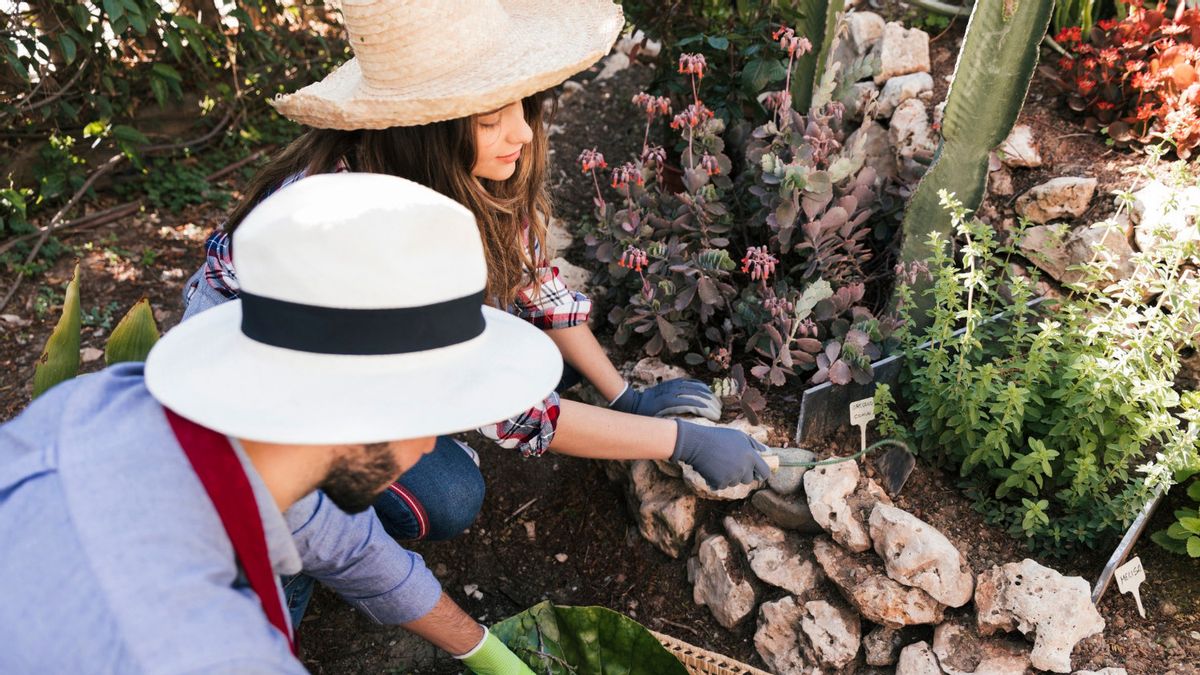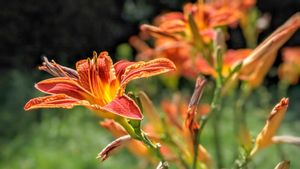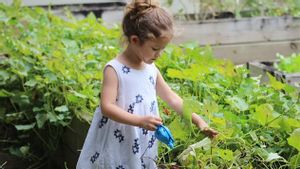YOGYAKARTA The dry season is a dry season and plants need to get enough water. If you plan to sow seeds this season, of course, it requires different treatment and even more details. In addition to better gardening in containers or pots, here's what you need to pay attention to when gardening in the dry season so that plants don't dry.
Plants absorb less moisture through the leaves. With the roots, they absorb nutrients and maintain moisture to live well. It is important to know, the more roots that plants have, the better the absorbed nutrients and the enough moisture. A well-developed root system such as sponges. Plants will grow small fiber roots, especially in dry conditions. Plant roots develop a good silvering system, make sure the planting medium soil remains moisturized, not hard and dense. How, break with a ground fork and add organic materials such as composts, peat moss, and leaf irrigation.
In addition to ensuring roots grow healthy, gardening tips during the dry season, make sure the leaves are also in good condition. Leaves do not absorb water, but plants lose water through the leaves. That is, you can reduce the number of leaves, but must maintain some of the best leaves.
As much as 98 percent of the water the plant absorbs, is ejected through microscopic pores called depositata. Blowing water vapor is an important part of the plant's metabolic process to absorb soil nutrients. This transpiration process also helps plants cool themselves in hot weather.
You need to start protection by placing the plants in a shady place. Plants can get the afternoon sun that is not too hot. It is important to remember, the fallen leaves in the hot afternoon do not always cause concern. In the hot sun, some plants are able to close their deposita and reduce transspiration. This is a natural defense mechanism. Once the sun sets and the air temperature starts to cool, the plants will continue their normal function and the leaves will grow again.
Another important way to reduce moisture loss is to protect your plants from being exposed to the wind. For example by creating new nedents or protecting with larger plants.
In the dry season, it is best to water the plants in the morning. Ideally watering can also help root development by watering longer. Plants also need more water to support root growth.
Apart from need to water the garden well, avoid giving fertilizers in hot and dry conditions. This prevents plants from experiencing stress. If you can ensure that root moisture and planting media are maintained, then you can add nutrients. But if you add nutrients without moisture, it will make plants stressed, wilted, and dry and then die.
You shouldn't add too much compost. But it should be given little by little consistently. Because this can help plants last longer. Soil organic materials also help reduce soil compactification and drought. This means, compost helps penetrate water into the ground, support microorganisms, and beneficial insects.
VOIR éGALEMENT:
Pieces of stems and leaves from healthy plants can be recycled. You can also use food left over from the kitchen as compost. This kitchen composite is best suited for vegetable and spice plants during the dry season.
Those are gardening tips in the dry season. You can practice it easily so that the plants don't dry, wither, and keep growing well.
The English, Chinese, Japanese, Arabic, and French versions are automatically generated by the AI. So there may still be inaccuracies in translating, please always see Indonesian as our main language. (system supported by DigitalSiber.id)


















